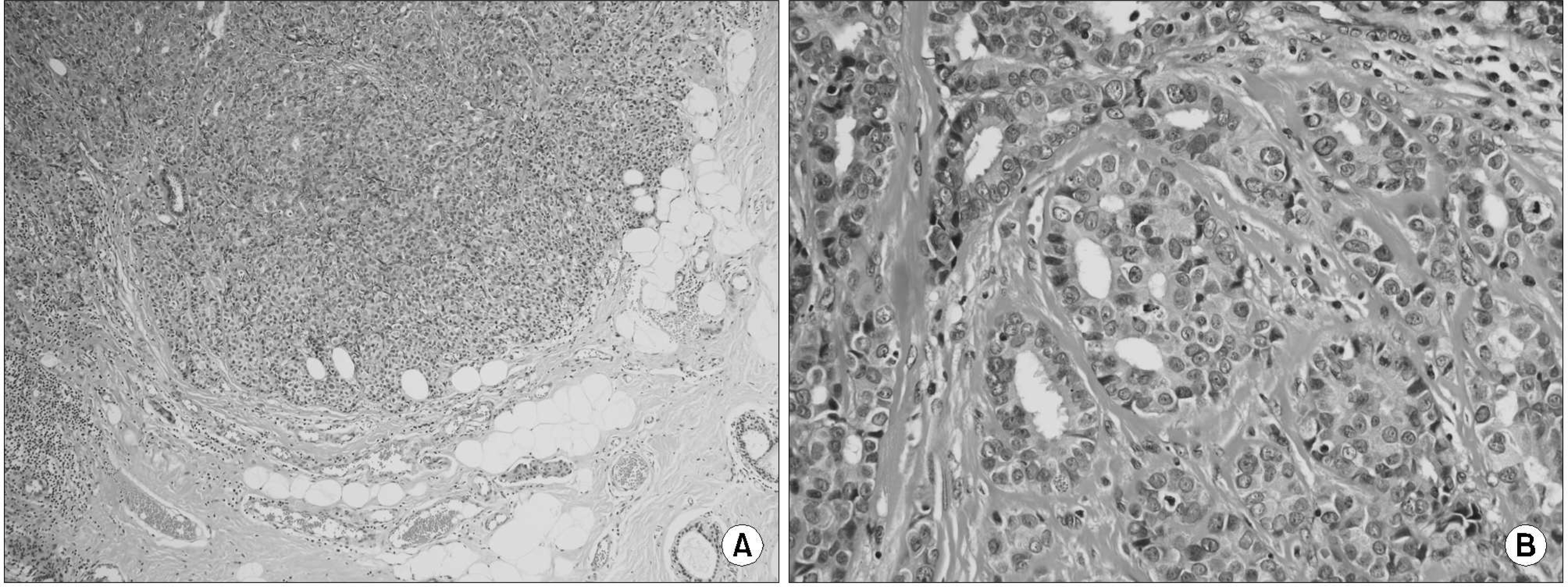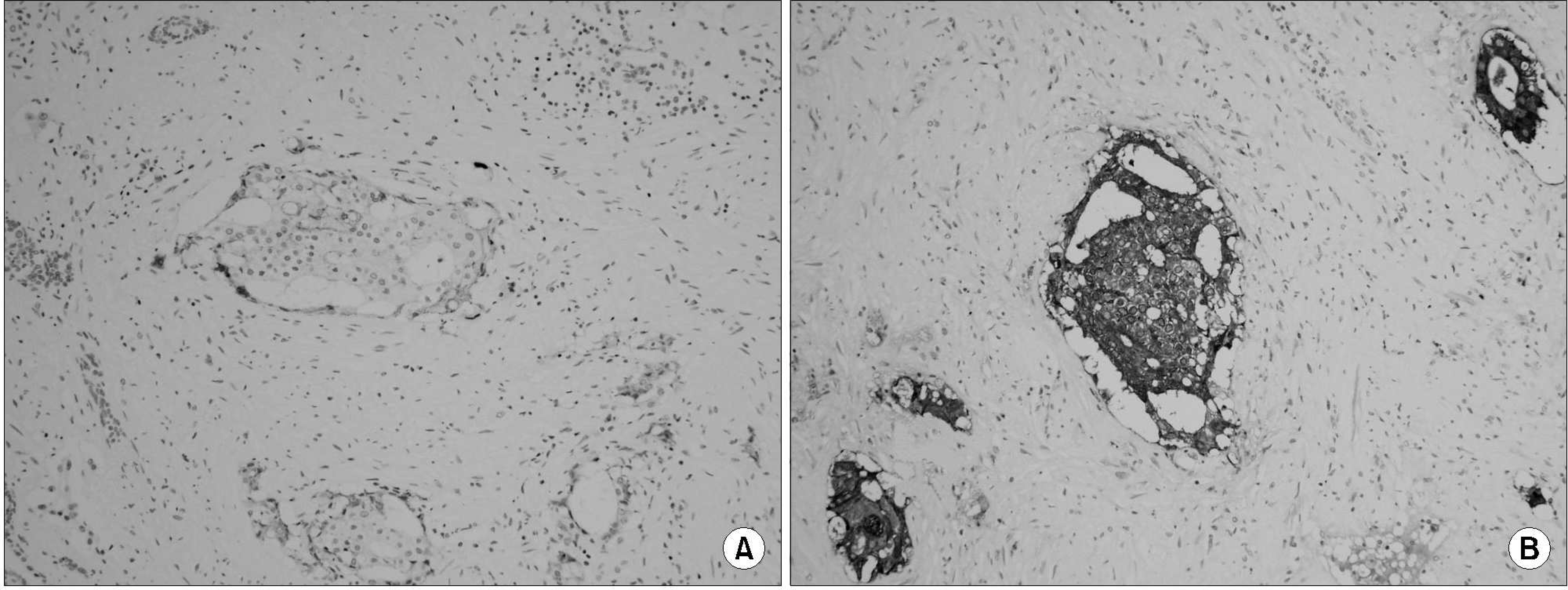Korean J Urol.
2007 Mar;48(3):348-351. 10.4111/kju.2007.48.3.348.
Male Patients with the Diagnoses of Synchronous Prostate and Breast Cancer
- Affiliations
-
- 1Department of Urology, Pusan National University College of Medicine, Busan, Korea. mkchung@ pusan. ac.kr
- 2Department of General Surgery, Pusan National University College of Medicine, Busan, Korea.
- 3Department of Pathology, Pusan National University College of Medicine, Busan, Korea.
- KMID: 1997136
- DOI: http://doi.org/10.4111/kju.2007.48.3.348
Abstract
- Prostate cancer and male breast cancer are similar in many ways, including the potential role of steroidal hormones in their pathogenesis and shared genetic abnormalities. However, the combination of these cancers in the same patient is rare. Herein, the case of a male patient, diagnosed with synchronous prostate and breast cancers, is reported.
MeSH Terms
Figure
Reference
-
1.Jemal A., Thomas A., Murray T., Thun M. Cancer statistics, 2002. CA Cancer J Clin. 2002. 52:23–47.
Article2.Lopez-Otin C., Diamandis EP. Breast and prostate cancer: an analysis of common epidemiological, genetic, and biochemical features. Endocr Rev. 1998. 19:365–96.
Article3.Ozet A., Yavuz AA., Komurcu S., Ozturk B., Safali M., Arpaci F, et al. Bilateral male breast cancer and prostate cancer: a case report. Jpn J Clin Oncol. 2000. 30:188–90.
Article4.Leibowitz SB., Garber JE., Fox EA., Loda M., Kaufman DS., Kanto伴PW , et al. Male patients with diagnoses of both breast cancer and prostate cancer. Breast J. 2003. 9:208–12.
Article5.Karlsson CT., Maimer B., WMund F., Gronberg H. Breast cancer as a second primary in patients with prostate cancerestrogen treatment or association with family history of cancer? J Urol. 2006. 176:538–43.
Article6.Sigurdsson S., Thorlacius S., Tomasson J., Tryggvadottir L., Benediktsdottir K., Eyfjord JE, et al. BRCA2 mutation in Icelandic prostate cancer patients. J Mol Med. 1997. 75:758–61.
Article7.Sasco AJ., Lowenfels AB., Pasker-de Jong P. Review article: epidemiology of male breast cancer. A meta-analysis of published case-control studies and discussion of selected aetiological factors. Int J Cancer. 1993. 53:538–49.
Article8.Diez O., Cortes J., Domenech M., Pericay C., Brunet J., Alonso C, et al. BRCA2 germ-line mutations in Spanish male breast cancer patients. Ann Oncol. 2000. 11:81–4.
Article9.Valeri A., Fournier G., Morin V., Morin JF., Drelon E., Mangin P, et al. Early onset and familial predisposition to prostate cancer significantly enhance the probability for breast cancer in first degree relatives. Int J Cancer. 2000. 86:883–7.
Article10.Cancer risks in BRCA2 mutation carriers. The Breast Cancer Linkage Consortium. J Natl Cancer Inst. 1999. 91:1310–6.
- Full Text Links
- Actions
-
Cited
- CITED
-
- Close
- Share
- Similar articles
-
- Clinical review of bilateral breast cancer
- Comparison of Synchronous and Metachronous Primary Carcinomas of the Bladder and Prostate
- Random Synchronous Malignancy in Male Breast: A Case Report
- A Prostate Carcinoma Metastasized to Bilateral Breasts
- Synchronous Pulmonary Malignancy Detected During PSMA Ligand PET/CT for Initial Staging of Prostate Cancer: a Case Report





